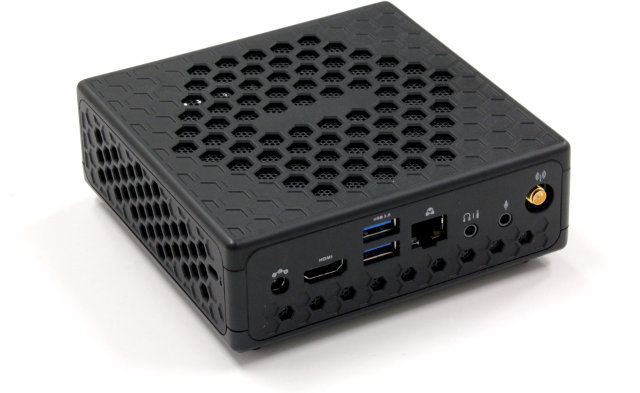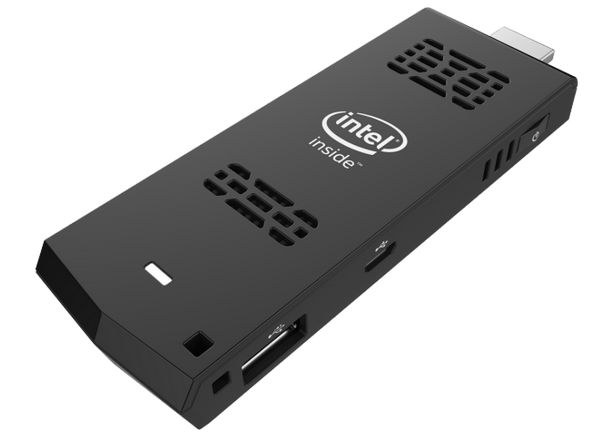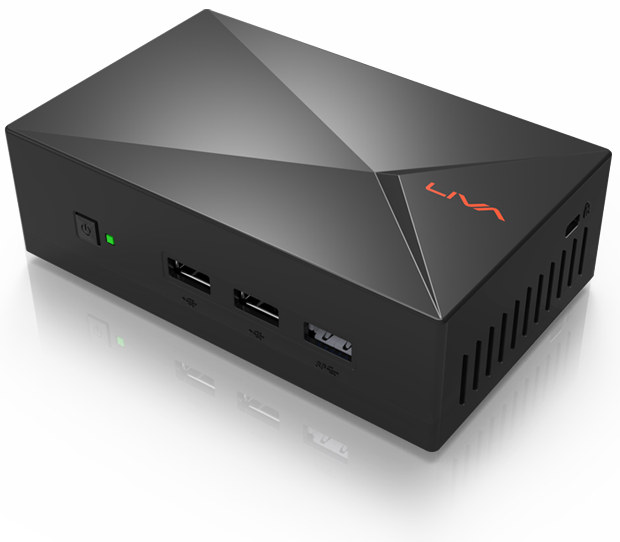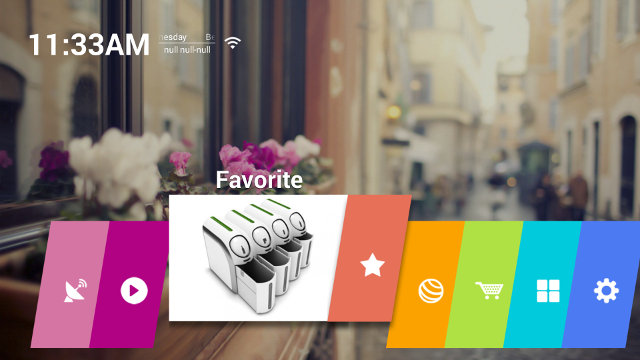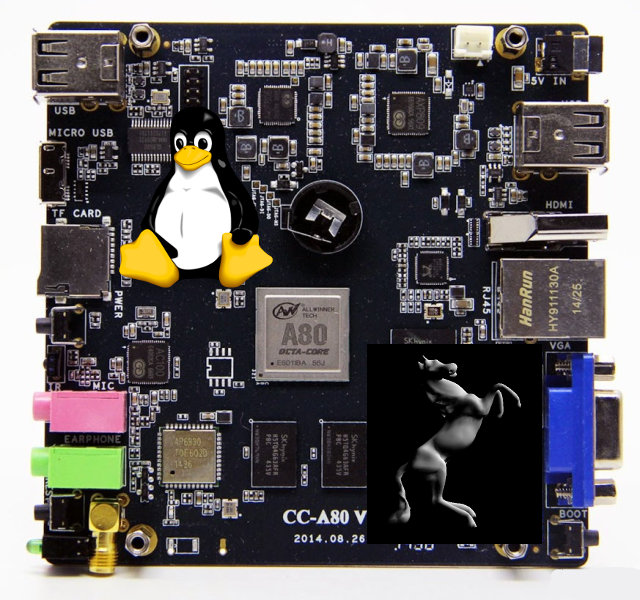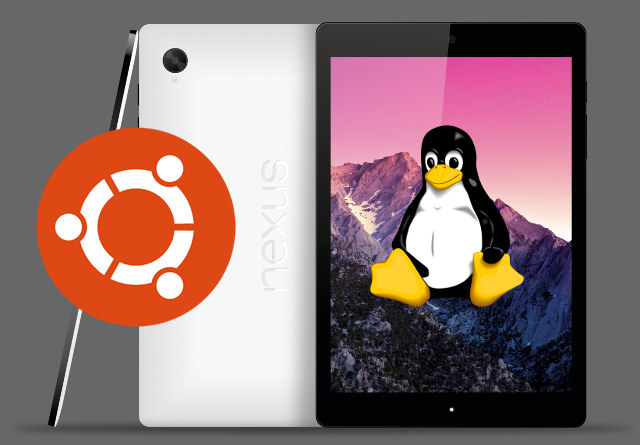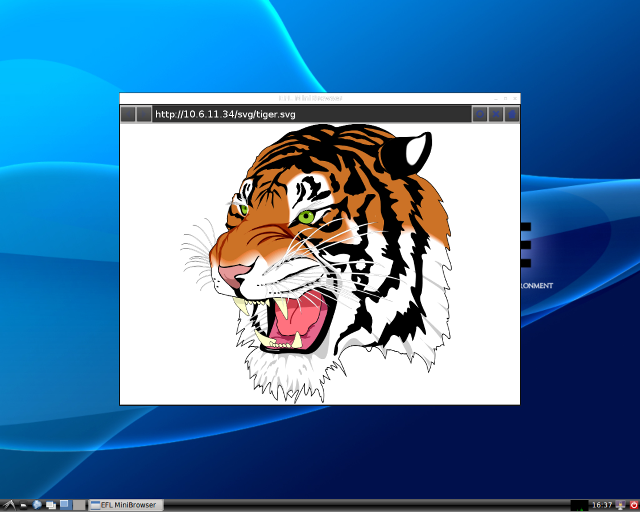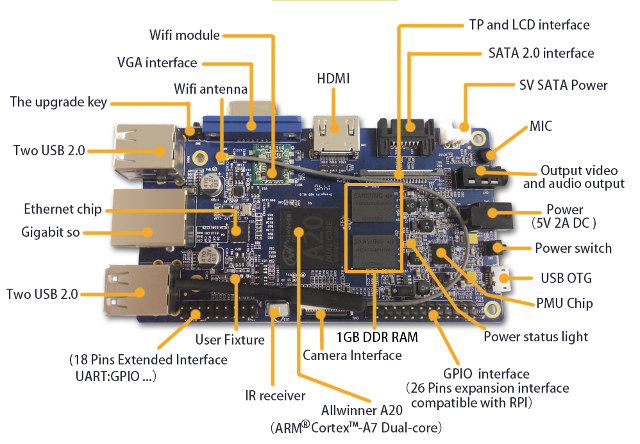Nvidia has done a great job porting Linux to their Tegra K1, and it’s one of the only ARM processor with a GPU supporting OpenGL, which helps a great deal with Unity for example. Nexus 9 supports Ubuntu (somewhat), and platforms like Jetson TK1 board are suitable to developers, but as I and others wondered why nobody ever made a Tegra K1 mini PC, I’ve been informed that such device existed already with PC Partner’s N258N1-F mini PC. N258N1-F technical specifications: SoC – Nvidia Tegra K1 quad-core ARM Cortex A15r3 processor with Kepler GPU System Memory – 2 GB RAM Storage – 16 GB eMMC + SD card slot Video Output – HDMI up to 3840×2160 @ 30Hz, 4096×2160 @ 24Hz or 3200×2000 @ 60 Hz Audio I/O – HDMI, headphone jack, and microphone jack Connectivity – Gigabit Ethernet and Wi-Fi (with external antenna connector) USB – 2x USB 2.0 […]
Intel Compute Stick HDMI TV Dongle Runs Windows or Ubuntu for as Low as $89
People got really interested in low cost small factor Intel devices at the end of the year, and one of my article about MeegoPad T01, an HDMI TV Stick powered by an Intel Atom Z3735F processor, even made it to the top 10 posts of 2014 on this blog. But instead of simply relying on partners, Intel had decided to enter the fray with Intel Compute Stick that will run Windows or Ubuntu on an Atom Bay Trail processor. There will actually be two versions of the hardware one for Windows 8.1 with Bing with 2GB RAM, and 32GB storage, and one for Linux with 1GB RAM, and 8G Storage. Intel Compute Stick preliminary specifications: SoC – Unnamed Intel Atom “Bay Trail” processor System Memory – 2 GB RAM (Windows) or 1 GB RAM (Linux) Storage – 32 GB eMMC (Windows) or 8 GB eMMC (Linux) + micro SD slot […]
ECS LIVA X Bay Trail Mini PCs Support Up to 4GB RAM, Windows and Linux OS
ECS LIVA was on of the first Bay Trail mini PC available on the market, and included both memory and storage. Elitegroup Computer System (ECS) has now officially announced an upgrade at CES 2015 with ECS LIVA X, another Bay Trail-M/I mini PC with up to 4GB, and 64GB storage. LIVA X specifications: SoC – Intel Bay Trail-M / I SoC up to 2.25 GHz. The M version is most probably featuring a dual core Celeron N2808 processor. System Memory – 2 or 4GB DDR3L Storage – 32 or 64GB eMMC + mSATA for SSD. 64Mb SPI Flash ROM with AMI BIOS. Video Output – 1x HDMI, 1x VGA. Dual independent displays supported. Audio – 1x audio combo jack (LIne In and Mic IN); Realtek ALC283 HD codec Connectivity 1x Gigabit Ethernet (Realtek RTL8111G) 802.11 b/g/n Wi-Fi and Bluetooth 4.0 USB – 1x USB 3.0, 2 x USB 2.0 […]
How to Take Screenshots and Record Videos in Android mini PCs without Root Access
I’ve started to test BFS 4KH Android TB box featuring HiSilicon HI3798M processor. I’m also the first things I normally do is to check for built-in screenshot support, and if not, I simply install a screenshot app like Screenshot Ultimate. This normally works pretty well, but the firmware is not rooted, and the usual root method for HiSilicon devices does not work, as it fails at the adb root stage with the message: “aabd cannot run as root in production builds”. So I was out of luck, and people who sent the sample for review do not seem to check / answer their email in a timely manner. ScreenShot Ultimate provides “No Capture Method Help“, but I found the instructions long, and it required me to install download and install something extra. So instead I check if I could do something with adb instead. adb can connect via USB or […]
3D Graphics Acceleration in Linux on Allwinner A80 based Cubieboard4
Allwinner A80 is a powerful octa-core processor found in development boards and TV boxes such as Cubieboard4 or Tronsmart Draco AW80. Some early Ubuntu images and instructions had already been released for A80 Optimusboard and Draco AW80, but none of these featured GPU drivers for 3D acceleration, which to be honest, has limited advantages in Linux desktop distributions since desktop environments and most apps require full OpenGL support, i.e. not only OpenGL ES, and the only ARM SoC that can provide OpenGL support without external graphics card is Nvidia Tegra K1 SoC. Having said that GPU drivers would pave the way for smooth OpenELEC / Kodi user interface support in Allwinner A80 Linux distributions. That’s only one part of the puzzle, since the GPU normally handles the user interface, while the VPU takes care of video decoding. The good news is that CubieTech release updates images for their Cubieboard4 (CC-A80) […]
How to Install Ubuntu ARM64 on Nexus 9 Tablet
HTC Nexus 9 is one of the first 64-bit ARM platform with powerful ARMv8 cores (e.g. not Cortex A53) that both commercially available, and relatively affordable at $399 to $599, at least significantly cheaper than the server boards such as Applied Micro X-C1. The tablet comes with Android 5.0 Lollipop, but for those of you who wish to have an ARM64 platform running Ubuntu or other 64-bit Linux operating systems, Ubuntu installation instructions provided by Ryan Houdek, Dolphin emulator developer, might come handy, especially it won’t affect your Android installation provided you have already unlocked your bootloader. The instructions are fairly long so I won’t reproduce them all here, so I recommend you check the detailed instructions on XDA, but the short summary below may give an idea of the amount of work needed: Install dependencies such as Aarch64 toolchain:
|
1 |
sudo apt-get install gcc g++ git gcc-4.9-aarch64-linux-gnu g++-4.9-aarch64-linux-gnu |
Build a initramfs with buildroot. You’ll need to enable […]
TyGL OpenGL ES 2.0 Backend for WebKit Speeds Up Web Rendering by Up to 11 Times
ARM, Szeged University in Hungary, and Samsung Research UK have been working on TyGL, a new backend for WebKit accelerated with OpenGL ES2.0, and developed and tested on ARM Mali-T628 GPU found in Samsung ARM Chromebook. It will typically provide 1.5 to 4.5 times higher performance, but in the best cases, it can achieve up to eleven times the performance of a CPU-only rendered page. The key features of TyGL include: Web rendering accelerated by GPU – Batching of draw calls delivers better results on GPUs. TyGL groups commands together to avoid frequent state changes while calling the Graphics Context API. Automatic shader generation – TyGL generates complex shaders from multiple shader fragments, and ensures the batches fit into the shader cache of the GPU. Trapezoid based path rendering – Work in progress. It will leverage GPU capabilities such as the Pixel Local Storage extension for OpenGL ES. No software […]
Orange Pi Development Boards Are Raspberry Pi “Clones” based on Allwinner A20 and A31s
After Raspberry Pi, Waxberry Pi, and Banana Pi boards, here come another fruit-named board with Orange Pi. There are actually three models, with Orange Pi and Orange Pi mini based on Allwinner A20, and Orange Pi Plus powered by a quad core Allwinner A31s processor. I’ve drawn a comparison table with the specifications for the three models. Please note that Orange Pi Plus full specifications have not been released yet, so I don’t have all details. Orange Pi Mini Orange Pi Orange Pi Plus SoC Allwinner A20 dual core Cortex A7 processor up to 1GHz with Mali-400 MP2 GPU Allwinner A31s quad core Cortex A7 processor with PowerVR SGX544MP2 GPU System Memory 1 GB DDR3 Storage 2x micro SD slot + SATA NAND Flash + micro SD slot + SATA TBD Video Output HDMI, AV, and DSI I/F HDMI, AV, VGA, and DSI I/F HDMI, AV, and DSI I/F Audio I/O HDMI, […]


